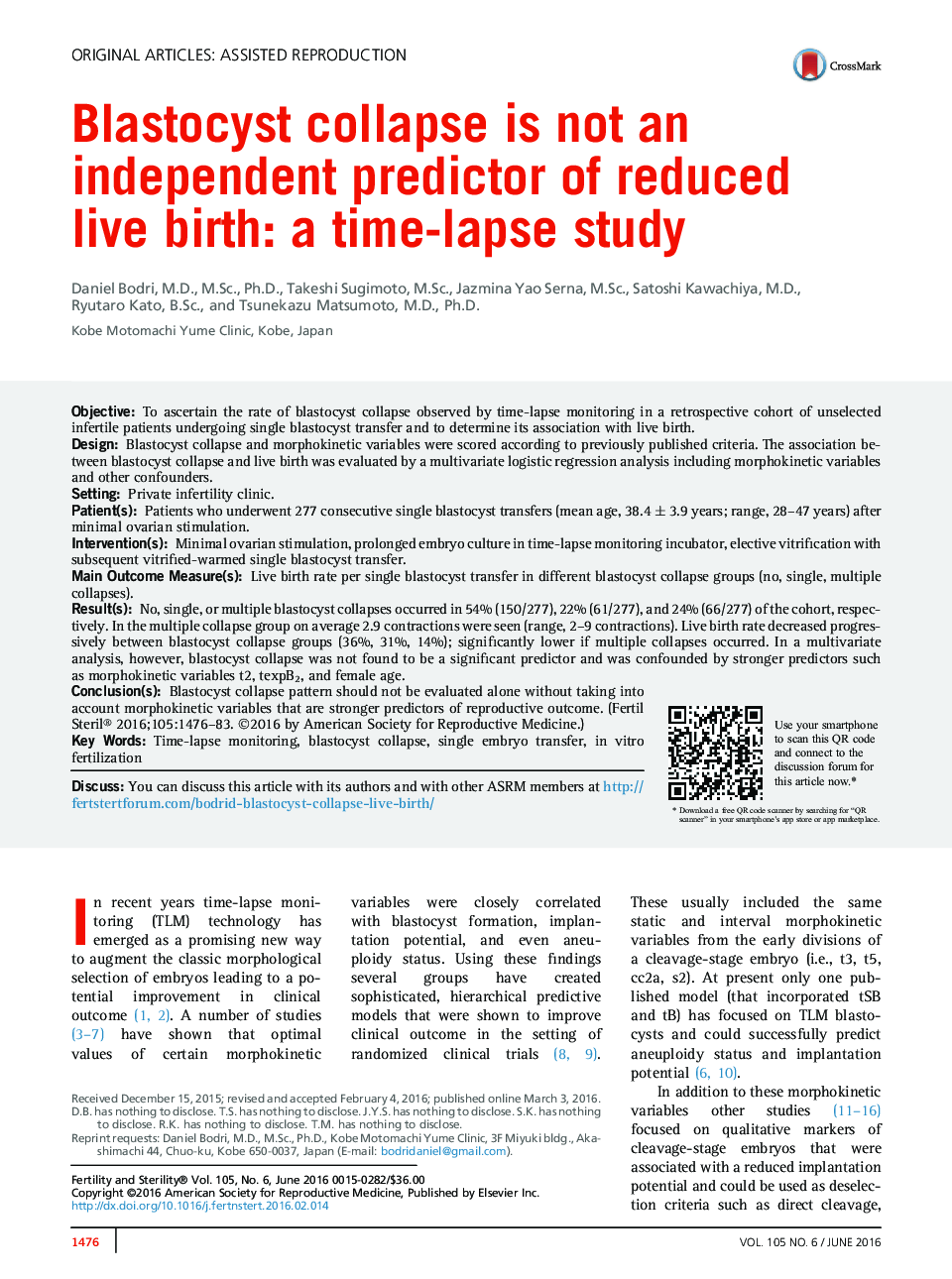| Article ID | Journal | Published Year | Pages | File Type |
|---|---|---|---|---|
| 6179441 | Fertility and Sterility | 2016 | 11 Pages |
ObjectiveTo ascertain the rate of blastocyst collapse observed by time-lapse monitoring in a retrospective cohort of unselected infertile patients undergoing single blastocyst transfer and to determine its association with live birth.DesignBlastocyst collapse and morphokinetic variables were scored according to previously published criteria. The association between blastocyst collapse and live birth was evaluated by a multivariate logistic regression analysis including morphokinetic variables and other confounders.SettingPrivate infertility clinic.Patient(s)Patients who underwent 277 consecutive single blastocyst transfers (mean age, 38.4 ± 3.9 years; range, 28-47 years) after minimal ovarian stimulation.Intervention(s)Minimal ovarian stimulation, prolonged embryo culture in time-lapse monitoring incubator, elective vitrification with subsequent vitrified-warmed single blastocyst transfer.Main Outcome Measure(s)Live birth rate per single blastocyst transfer in different blastocyst collapse groups (no, single, multiple collapses).Result(s)No, single, or multiple blastocyst collapses occurred in 54% (150/277), 22% (61/277), and 24% (66/277) of the cohort, respectively. In the multiple collapse group on average 2.9 contractions were seen (range, 2-9 contractions). Live birth rate decreased progressively between blastocyst collapse groups (36%, 31%, 14%); significantly lower if multiple collapses occurred. In a multivariate analysis, however, blastocyst collapse was not found to be a significant predictor and was confounded by stronger predictors such as morphokinetic variables t2, texpB2, and female age.Conclusion(s)Blastocyst collapse pattern should not be evaluated alone without taking into account morphokinetic variables that are stronger predictors of reproductive outcome.
